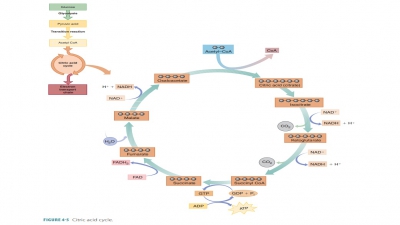Glycogenesis
| Home | | Anatomy and Physiology | | Anatomy and Physiology Health Education (APHE) |Chapter: Anatomy and Physiology for Health Professionals: Levels of Organization : Cellular Metabolism
Cells cannot store large amounts of ATP. As a result, unlimited amounts of glucose do not cause an unlimited amount of ATP to be synthesized.
Glycogenesis
Cells cannot store large amounts
of ATP. As a result, unlimited amounts of glucose do not cause an unlimited
amount of ATP to be synthesized. If there is excessive glucose available that
cannot be oxidized immediately, glucose catabolism is soon inhibited by the
increasing concentrations of ATP in the cells. Therefore, glucose is stored as
either fat or glycogen. Fats make up 80% to 85% of stored energy because the
body is able to store much more fat than glycogen. Glycogenesis is a process in which glucose molecules are joined (in long chains) to
form glycogen. This occurs when ATP levels begin to stop glycolysis from
occurring. Glucose enters the cells to become phosphorylated to
glucose-6-phosphate. It is then converted to its isomer, which is known as
glucose-1-phosphate. As the enzyme glycogen synthase catalyzes glucose attachment
to the glycogen chain, the terminal
phosphate group is cleaved off. When glycogen is being synthesized and stored,
the skeletal muscle and liver cells are at their most active states.

